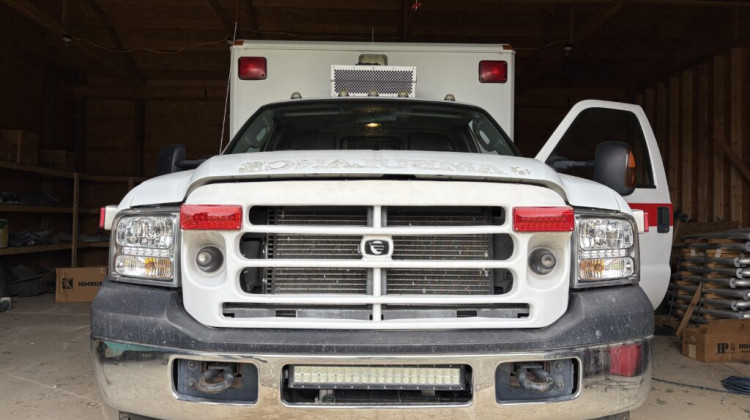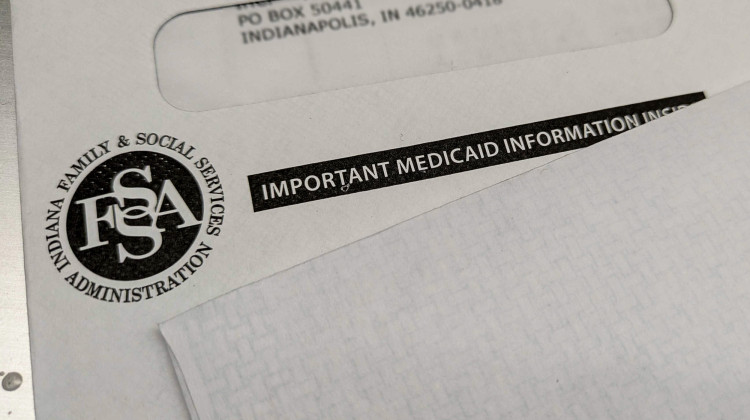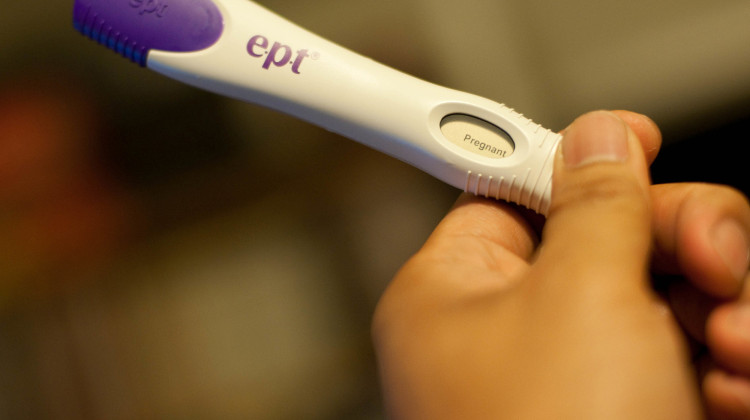
After contracting COVID-19 and ending up on life support, Mayra Ramirez received a double-lung transplant on June 5, 2020, at the age of 28. She poses with her dog in this photo taken in January 2021.
Provided by Myra RamirezIn the early months of the COVID-19 pandemic, Mayra Ramirez contracted the virus and ended up in the ICU on life support. She was 28.
The virus had severely damaged her lungs and doctors concluded she would not survive without a double-lung transplant.
In June, Mayra became the first U.S. COVID-19 patient to undergo the life-saving procedure.
She spoke with Side Effects Public Media about what she’s been through in the past year.
The following transcript has been edited and condensed for clarity.
My name is Mayra Ramirez and I live in Bridgeview, Illinois.
I had my transplant on June 5, 2020, and I was inpatient at the hospital for a few weeks after that. When I woke up, I couldn’t recognize my body, couldn't move, couldn't really breathe.
After that, I went to Shirley Ryan, a rehabilitation center, for physical therapy, occupational therapy and speech therapy.
I did a lot of day-to-day things, like brushing my teeth, which I wasn't able to do before, and brushing my hair. And a lot of walking, and showering and bathing myself.
I thought at the beginning, everything was just so fast. Every single day I was improving, I was being able to do more than it was the day before.
That kind of hit a plateau and then started to decline; and that's due to an infection that I contracted.
It got really bad at the end of last year. I had an awful cough, fevers, chills, a lot of fatigue, nausea, vomiting.
Turns out that a CT scan showed that I have an infection in my sternum where bacteria is eating away at my bone.
The bacteria is really rare and it's really hard to treat. My doctors went in and scraped off the infected bone and infected skin. They did that twice before closing it up; that was in November.
So now, I’m just trying to get better, waiting for my scars to heal, dealing with letting my body heal again.
I feel like at the beginning, I was so much more hopeful, like I'm gonna get back to myself, you know, this is just a minor inconvenience. I felt like I had some hope that things would get better.
And now it just feels like ... not.
In the beginning, I had a lot of anxiety attacks, a lot of panic attacks. But I’m dealing much better with that now.
I’m doing much better at my job. I’m a paralegal at an immigration firm. I help people obtain immigration benefits.
Not only have I been back, but I’m also taking leadership roles, I’m holding more responsibilities.
The hardest parts are the physical impediments.
The more I try and the harder I try, the more I realize that I'm never going to be back to myself. And I could just be thankful for, honestly, just being able to use the bathroom by myself, and just being able to continue my work and maintain my health insurance.
I feel useful. I feel like I have a purpose and I feel like I can still help others.
I'm honestly just happy to be alive.
This story was produced by Side Effects Public Media, a news collaborative covering public health. Follow Christine on Twitter: @CTHerman.
 DONATE
DONATE









 Support WFYI. We can't do it without you.
Support WFYI. We can't do it without you.